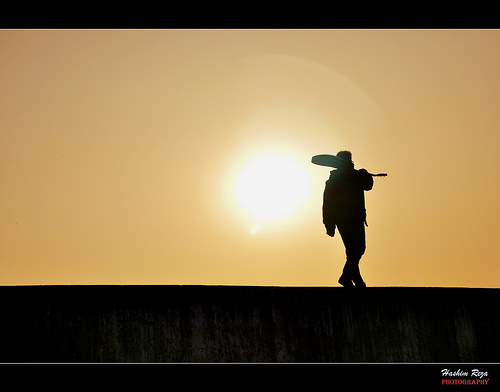From a legal perspective, the formation of a music publishing company is, in most respects, very similar the formation of any other type of company, except that the documentation is tailored specifically for the business of music publishing.
The first step in the formation of any business, including a music publishing company, is to determine what type of business entity you desire to form. There are four basic forms any business can take:
- Sole Proprietorship
- Partnership
- Corporation
- Limited Liability Company
With the exception of a sole proprietorship, these entities can take on several forms, such a a limited partnership as opposed to a general partnership, an S-Corporation as opposed to a C-Corp, and a member managed LLC as opposed to a manager managed LLC, just to illustrate a few of the iterations. You are strongly advised to seek the counsel of a qualified entertainment attorney and a music business accountant prior to establishing your company.
The decision as to which type of entity to create impacts the liability to which the individual members of the entity can be exposed. In a partnership, for example, each individual member of the partnership is liable for the actions  of the other partner or partners. Of course, a sole proprietor is liable for his or her own actions as well. Only corporations and limited liability companies shield the indivudal members from liability impacting their personal assets. For this reason, when forming a music publishing company, it is most frequently advised that one of those two entities be used, as publishers are often the subject of copyright infringement actions, among other things.
of the other partner or partners. Of course, a sole proprietor is liable for his or her own actions as well. Only corporations and limited liability companies shield the indivudal members from liability impacting their personal assets. For this reason, when forming a music publishing company, it is most frequently advised that one of those two entities be used, as publishers are often the subject of copyright infringement actions, among other things.
The choice between a corporation and a limited liability company is frequently a personal one. The corporation is a more formal structure than the the LLC, involving the selection of a board of directors, a president, sometimes a vice president, and a secretary and treasurer. The limited liability company, on the other hand, can take many forms. It can be member managed, similar to the management style of partnership or it can be manager managed, either in simple arrangement where one person acts as a manager, on in a configuration more like the corporation, where there are individuals serving in the various roles of president, vice president, secretary and treasurer. It is this greater flexibility of management that spawns the popularity of the limited liability companies in today’s culture. One should not be so quick to decide, however, without the input of a good tax consultant and/or attorney.
Once a decision is reached as to the type of business entity the music publishing company will take, it will be necessary to determine a name for the publishing company. This is where forming a music publishing company differs somewhat from other businesses, because of a music publishing company’s interaction with the major performing rights organizations (PRO’s), primarily ASCAP, BMI and SESAC. Whereas a songwriter can only affiliate with one PRO at a time, a music publisher affiliates with all three if it intends to conduct significant business. In order to submit an application, each PRO requires, among other things, that a music publisher give three choices for names in order of priority. So, when choosing a name for your music publishing company, bear in mind that you will need at least nine variations in order to submit applications to the PRO’s.
To illustrate this point, consider the various entities used by Sony ATV Music Publishing Nashville, a major player in the Nashville music publishing arena since its purchases of Tree Publishing and Acuff Rose Music merged two of the giants in the history of the Nashville music industry. One recently charted song by Taylor Swift, Our Song, is owned in part by Sony ATV’s BMI publisher affiliate, Sony/ATV Tree, BMI. Another song on Billboard’s country single chart this week is Rascal Flatt’s Take Me, which owned in part by Sony ATV’s ASCAP affiliate, Sony ATV Tunes, ASCAP. Finally, Sony ATV also has a SESAC affiliate, which goes by the name Sony ATV Sounds, SESAC. A closer examination reveals that each of these entities are separate entities, probably owned in whole or in part by the parent conglomerate. As a side note, Sony ATV Music Publishing Nashville was recently name country music publisher of the year 2007 by all three PRO’s, ASCAP, BMI and SESAC, making it the first publisher in history to do so. Read about it here.
You’ll note that Sony ATV uses a different, creative variation of the name for each PRO affiliate, a pattern often followed by other publishing houses, such as Warner Chappel Music, which has variations such as WBM Music SESAC, WB Music ASCAP, Warner-Tamerlane Publishing, BMI, and Warner Chappel SOCAN (a Canadian PRO).
Smaller publishers may not wish to follow the course of Sony ATV by maintaining separate limited liability companies for each publisher affiliate and parent LLC, as this can lead to greater expense in the formation of the company. Rather, one option would be that one entity can be used for the parent company, and operate subsidiaries under assumed names for each of the publishing affiliates.
Once you’ve determined the names to be used and the types and numbers of entities you’ll be using, the next step is to prepare and file the appropriate documentation with the secretary of state in the state you’ll be operating your business. Information about formation of a business entity in Tennessee is available from Tennessee’s Secretary of State. Then, in Tennessee, you must register the entity in the Register of Deeds office for the county in which your principle place of business resides. Next, you’ll need to obtain a Taxpayer Identification Number from the IRS by filing Form SS-4. Finally, you’ll need to apply as an affiliate at each of the following PRO’s: ASCAP, BMI & SESAC, assuming, of course, that you intend to contract with writers from each of these affiliates. You’ll note that SESAC has a different process than ASCAP or BMI in that the process is more selective and requires that you initiate contact with their Publishers Relation Staff prior to being reviewed for affiliation.
You might also want to explore joining an organization such as the National Music Publisher’s Association, which owns and operates the Harry Fox Agency, an organization that serves as the clearinghouse for the collection and distribution of mechanical and digital license fees.
After this, you need to begin the process of developing agreements that will be used to sign songwriters to your various affiliate companies. Work with a good entertainment attorney to customize and draft exclusive songwriting agreements and single songwriting agreements as an basic first step in this process. Then, you’re ready to start scouting talent!
This article is intended as a basic outline of the steps required to form a music publishing company. It is not intended as, and should not be substituted for, the advise of a good entertainment attorney, which should definitely be retained and consulted prior to starting this entire process. Expect to spend somewhere in the range of $5,000-10,000 in various legal fees to complete the entire process.
Technorati Tags: Music Publishing , Music Industry , Performance Rights Organizations , Nashville , Songwriting , Entertainment Industry , Entertainment Lawyer , Music Lawyer , Music Law , Corporation , Business Formation , Music Business , Harry Fox Agency
 he officially welcomes attendees to the 39th Country Radio Seminar (CRS-39) on March 5th.
he officially welcomes attendees to the 39th Country Radio Seminar (CRS-39) on March 5th.





































